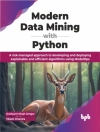Membrane computing is a branch of natural computing which investigates computing models abstracted from the structure and functioning of living cells and from their interactions in tissues or higher-order biological structures. The models considered, called membrane systems (P systems), are parallel, distributed computing models, processing multisets of symbols in cell-like compartmental architectures. In many applications membrane systems have considerable advantages – among these are their inherently discrete nature, parallelism, transparency, scalability and nondeterminism.
In dedicated chapters, leading experts explain most of the applications of membrane computing reported so far, in biology, computer science, computer graphics and linguistics. The book also contains detailed reviews of the software tools used to simulate P systems.
Jadual kandungan
to Membrane Computing.- to Membrane Computing.- Bio-applications.- P System Models for Mechanosensitive Channels.- P Systems for Biological Dynamics.- Modeling Respiration in Bacteria and Respiration/Photosynthesis Interaction in Cyanobacteria Using a P System Simulator.- Modeling Cell-Mediated Immunity by Means of P Systems.- A Membrane Computing Model of Photosynthesis.- Modeling p53 Signaling Pathways by Using Multiset Processing.- Computer Science Applications.- Static Sorting P Systems.- Membrane-Based Devices Used in Computer Graphics.- An Analysis of a Public Key Protocol with Membranes.- Membrane Algorithms: Approximate Algorithms for NP-Complete Optimization Problems.- Computationally Hard Problems Addressed Through P Systems.- Applications to Linguistics.- Linguistic Membrane Systems and Applications.- Parsing with P Automata.- Membrane Software.- Available Membrane Computing Software.
Mengenai Pengarang
The first editor, Gabriel Ciobanu, has considerable experience in natural computing and theoretical computer science, and coedited the Natural Computing series book ‘Modelling in Molecular Biology’ (2004). The second editor initiated the field of membrane computing in 1998; authored in 2002 the Natural Computing series book ‘Membrane Computing — An Introduction’, the only dedicated book on this topic; and has co-organized and co-edited relevant workshops (e.g., the International Workshop on Membrane Computing 2002) and proceedings. The third editor, Mario J. Perez-Jimenez, has considerable experience in the fields of natural computing, molecular computing, DNA computing, unconventional computing, etc., and recently coorganized the Int. Workshop on Membrane Computing 2004.












